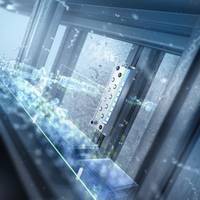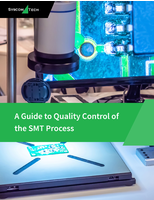New Machine-level Block I/O Devices Feature Individually Configurable M12 Sockets
Press Release Summary:

- Simatic ET 200eco PN includes five digital I/O devices as well as an IO-Link master device
- Protected from UV radiation and harmful substances even under adverse environmental conditions
- Supports S2 redundancy, making them suitable for use in redundant systems
Original Press Release:
New Generation of Machine-level Block I/O Devices with IP65/67 Protection
- Next generation of Simatic ET 200eco PN: New functions for modern machine concepts and requirements
- For use in redundant, high-availability systems thanks to S2 redundancy
- High current-carrying capacity with power supply via L-coded plug
- High-quality industrial enclosure with IP65/67 protection for outdoor use
Siemens has launched a new generation of machine-level block I/O devices in the form of the Simatic ET 200eco PN. The new I/O family with IP65/67 degree of protection includes five digital I/O devices as well as an IO-Link master device and offers users a whole range of new functions for modern machine concepts and requirements. In their new industrial metal enclosure, the devices are reliably protected from UV radiation and harmful substances even under adverse environmental conditions, making it possible to use the devices outside of factory buildings. The devices are supplied with power via an L-coded plug, resulting in a considerably higher current-carrying capacity. In turn, this enables longer cable routes in the field, and the supply and connection of more energy-intensive components (such as valve terminals) without the need for more supply cables.
The new I/O devices feature individually configurable M12 sockets and support S2 redundancy, making them suitable for use in redundant systems such as the high-availability Simatic S7-1500R/H systems, for example in tunnel applications. Thanks to the internal Modular Shared Input (MSI) and Modular Shared Output (MSO), the user has simultaneous and independent read access to the current switching state of module inputs and outputs from multiple controllers, without the need for additional programming overhead. This enhances machine and plant transparency.
The shared device function means that the I/O device channels can be split between two IO controllers. This allows the creation of flexible automation concepts.
Background information:
Concepts for new machinery and plants are becoming increasingly distributed. Control cabinets are getting smaller, or even disappearing completely, and I/O systems which used to be deployed in the control cabinet are being replaced with smaller, rugged versions in IP65/67 with complete protection from dust and water. It is now possible to design smaller machines, as the devices can be mounted almost anywhere on the machine, saving space and costs. This also helps to significantly reduce cabling distances between I/O devices and sensors/actuators, not only cutting material costs, but also making machine transport, installation, and disassembly easier and reducing the likelihood of cabling errors.
Additional Information about Simatic ET 200eco PN can be found at www.siemens.com/et200ecoPN
Contact for Journalists:
Andreas Friedrich
Phone: +49 1522 2103967
E-mail: friedrich@siemens.com
Follow us on Social Media:
Twitter: www.twitter.com/MediaServiceInd and www.twitter.com/siemens_press
Blog: https://blogs.siemens.com/mediaservice-industries-en
Siemens Digital Industries (DI) is an innovation leader in automation and digitalization. Closely collaborating with partners and customers, DI drives the digital transformation in the process and discrete industries. With its Digital Enterprise portfolio, DI provides companies of all sizes with an end-to-end set of products, solutions and services to integrate and digitalize the entire value chain. Optimized for the specific needs of each industry, DI’s unique portfolio supports customers to achieve greater productivity and flexibility. DI is constantly adding innovations to its portfolio to integrate cutting-edge future technologies. Siemens Digital Industries has its global headquarters in Nuremberg, Germany, and has around 75,000 employees internationally.
Siemens AG (Berlin and Munich) is a global technology powerhouse that has stood for engineering excellence, innovation, quality, reliability and internationality for more than 170 years. The company is active around the globe, focusing on the areas of power generation and distribution, intelligent infrastructure for buildings and distributed energy systems, and automation and digitalization in the process and manufacturing industries. Through the separately managed company Siemens Mobility, a leading supplier of smart mobility solutions for rail and road transport, Siemens is shaping the world market for passenger and freight services. Due to its majority stakes in the publicly listed companies Siemens Healthineers AG and Siemens Gamesa Renewable Energy, Siemens is also a world-leading supplier of medical technology and digital healthcare services as well as environmentally friendly solutions for onshore and offshore wind power generation. In fiscal 2018, which ended on September 30, 2018, Siemens generated revenue of €83.0 billion and net income of €6.1 billion. At the end of September 2018, the company had around 379,000 employees worldwide. Further information is available on the Internet at www.siemens.com.




